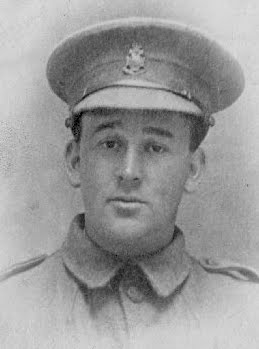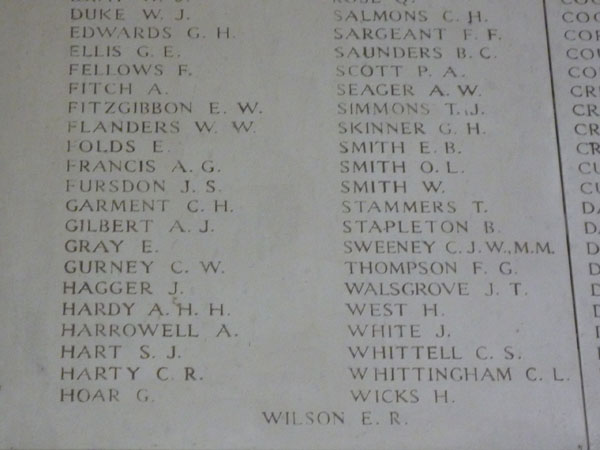R. E. Wild
Service no. R/6573
Rifleman, King’s Royal Rifle Corps, “C” Coy. 9th Battalion
Died of wounds on 25 September 1915, aged 20
CWGC: “Son of Herbert John and Annie Wild, of 24 Halstead Street, Brixton, London.”
Remembered at Ypres (Menin Gate) Memorial, Ypres, Belgium and on the war shrine at St Michael’s Church, Stockwell Park Road, London SW9 0DA
Brother of Herbert William Wild


